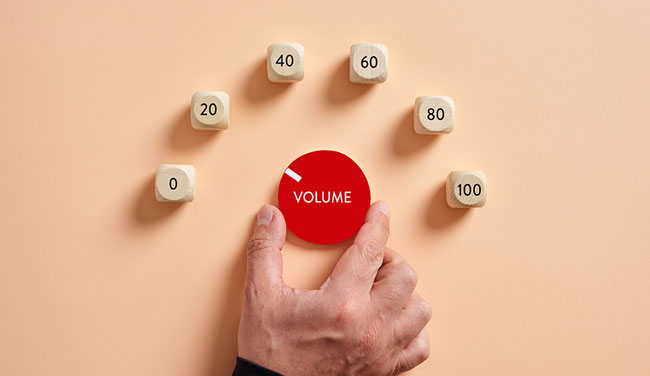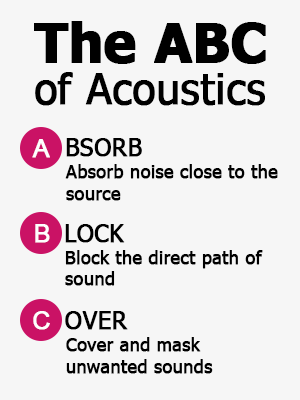24th January 2025

As remote work becomes increasingly common, especially in contact centres and BPOs, managing background noise has become a crucial challenge.
We are all aware that noise distractions are frustrating for both agents and customers, as they can seriously disrupt focus and communication, leading to a drop in service quality, and even cause customer service agents to miss important details, and prolong calls.
In this article we explore how contact centre remote workers can reduce background noise and improve their working environment.
In a remote contact centre setting, background noise can come from a variety of sources, such as household appliances, pets, children, or external factors like traffic.
Even minor distractions can have a significant impact on agents and customers alike as noise during calls may lead to repeated questions or misunderstandings, wasted time, and customer dissatisfaction.
For organizations, the impact of background noise can lead to longer calls and lower productivity, and it can even come across as unprofessional to customers.
In the long run, noise distractions can also affect workers’ mental health, causing stress and reducing job satisfaction.
Therefore, reducing background noise is essential not only for smoother operations but also for maintaining a professional image and ensuring customer satisfaction. In addition, having your agents work in a quiet environment has other benefits such as:
To help reduce background noise for your remote agents, we have put together a few practical solutions that remote workers can do for themselves and suggested some actions that employers can take to support them to create a quieter environment.
Encourage agents to leave a note for delivery drivers, so instead of ringing the doorbell, they just leave the package on your porch to be picked up later.
Advise employees to move their desks away from windows or thin walls that let in external noise. A quieter spot in the house, such as a room farther from the main road, can reduce distractions.
In empty rooms, advisors may pick up echoes from all of the sounds that come from inside and outside of their office.
In empty rooms, advisors may pick up echoes from all of the sounds that come from inside and outside of their office. Moving rugs, paintings and cushions into the room can help to guard against this. Plants can also help!
Moving furniture around can also reduce noise. Placing a bookshelf or large piece of furniture against a noisy wall can act as a sound buffer, and rearranging the desk to a quieter corner can reduce the amount of noise that carries through the room.
Agents should position their microphone closer to their mouth to reduce the amount of background noise picked up. Keeping fans and other devices away from the microphone can further reduce ambient noise on calls.
It’s important for employees to communicate the need for silence during working hours to family members or roommates. Setting clear boundaries and establishing times when interruptions are allowed can reduce noise.
Simply shutting windows and doors can block out a significant amount of external noise. For more persistent noise issues, using weather stripping or soundproofing seals around windows and doors can help minimize sound leakage.
Investing in high-quality, noise-cancelling headphones for employees is one of the most effective ways to help reduce distractions. These headphones can block out most background noise, allowing employees to focus on calls.
“In loud, fast-paced environments, noise and low-quality sound on calls impact both the customer and agent experience. Jabra’s research reveals that 71% of UK employees find loud environments mentally exhausting, and 50% are stressed by office noise.
Managers can mitigate this by investing in professional noise-cancelling headsets that help employees concentrate. In fact, nearly three-quarters (72%) state that clear, high-quality sound enhances their focus.” – Nigel Dunn, Managing Director EMEA North, Jabra
When choosing headsets, consider options that provide both comfort and excellent sound quality. Additionally, training staff on how to use the headsets properly can maximize their benefits.
When considering which headsets to use, the decision often comes down to a choice between binaural or monaural options. For advice on which type to choose, read our article: Binaural vs Monaural Headsets in the Contact Centre
Employers can provide or recommend noise-filtering software to their team. These tools can filter out unwanted sounds during calls, ensuring clearer communication between agents and customers.
White noise machines or apps that generate constant, low-level noise can help mask sudden, sharp noises from outside. This can create a more consistent and less distracting audio environment for workers dealing with unavoidable external sounds like traffic.

Teach remote contact centre agents the ABC of acoustics – Absorb, Block, and Cover – to help them manage background noise more effectively.
Educate agents on how to Absorb sound by adding soft furnishings like rugs or curtains to reduce echoes in their workspace.
Block noise by encouraging the use of noise-cancelling headsets or repositioning desks away from high-traffic areas.
Lastly, help them Cover unwanted sounds by using white noise apps or machines, which mask distracting background noise and create a more focused work environment.
With employees working from home, responsibility for a quiet working environment falls to both the employee and the employer.
It is, however, important to consider that if background noise is a persistent problem for remote agents, and all of the suggested steps have been taken to reduce it with no effect, you may need to reconsider if remote working is the right option for all employees.
For more on the topic of reducing background noise and contact centre headsets, read our articles:
Reviewed by: Xander Freeman